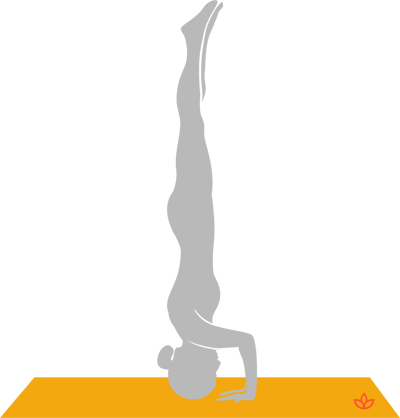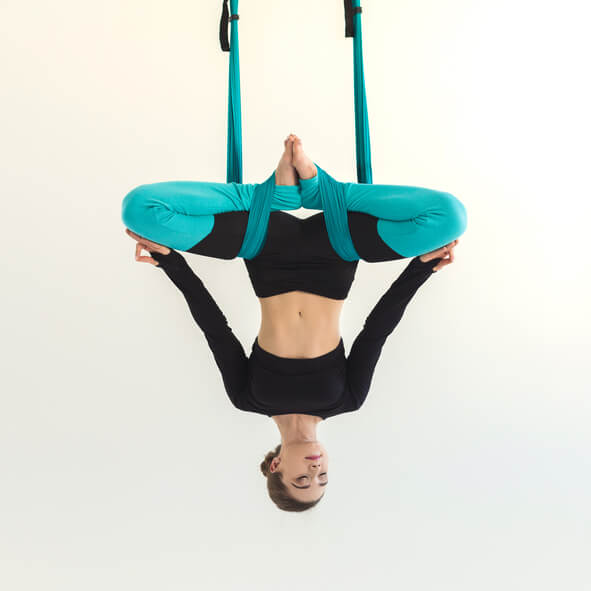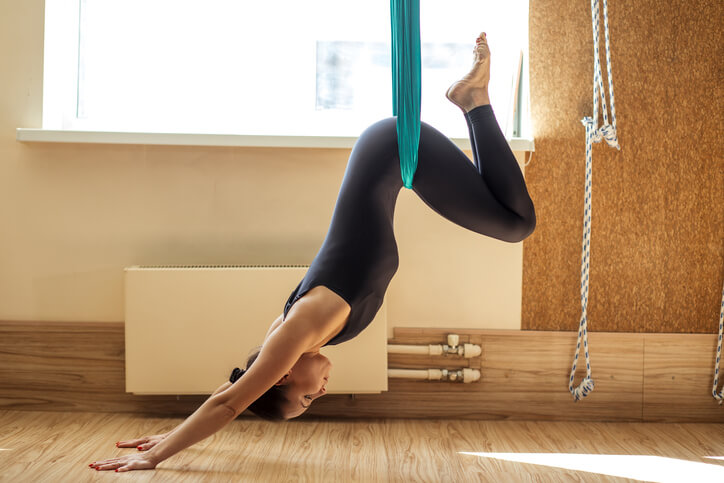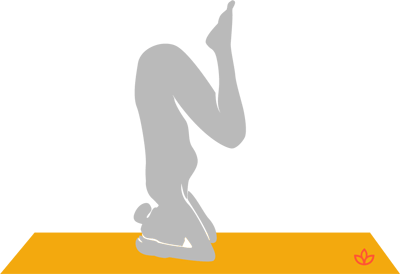It is common in the world of yoga to watch someone perform inversions with grace and ease. Inversions like headstand (sirsasana), forearm stand (pincha mayurasana) and handstand (mukha vrksasana) evoke a sense of awe, curiosity, and possibly even fear.
Inversions are an important part of a yoga asana sequence, no matter what style you practice, whether it’s Hatha, Vinyasa, Ashtanga, Iyengar, or one of the newest types where inversions are emphasized: Aerial yoga.
Inversions reverse the effect of gravity on the body, which usually is pulled downward toward the feet in everyday life. When the energy and circulation flow toward the head, it can revitalize and stimulate the body.
Children love playing and going upside-down, which is something we may have forgotten the older we have become. As Neale Donald Walsch says:
"Life begins at the end of your comfort zone.”
The aerial yoga hammock is a supportive prop that can hold your body in various ways, on your feet, on your hands, and in the air. This tool fuses the alignment principles of Iyengar with the circus acrobatics of performing artists on silk fabric.
Whether you are afraid of going upside-down or want to develop more strength for your mat-based inversion practice, the yoga hammock has a lot it can offer to help you get upside-down.
Holding an Inversion
Let’s take a look first at what is required to hold an inversion:
- Core strength
- Neck, shoulder, and wrist stability
- Open hips
- Flexible spine
- Confidence and prior yoga practice
Inversions are important because they help reverse the body’s blood flow to the brain. This helps the organs perform at a more efficient rate.
Additionally, cerebrospinal fluid also increases in the brain, which can promote the production of mood-boosting neurotransmitters that make you feel good.
However, inversions are something that needs time to be worked up to. Beginners need to take it slow and understand in the beginning that they may feel afraid, dizzy, or even nauseous when they go upside-down.

Sirsasana, the headstand, is known as the “king of asana”. If you think about it, kings are not too easy to get close to. There are all sorts of security personnel you have to work through if you want to become friends with a king. The same can be said when you learn how to stand on your head.
In traditional yoga, inversions were practiced to raise the kundalini shakti energy. Commonly described as a serpent sleeping at the base of the spine, when she awakens, the ordinary, mundane energy of daily life is transmuted into the energy of spiritual awakening.
Other Benefits of Inversions:
- Help with headaches
- Calm the mind
- Increased strength and balance
- Boost immune system
- Get a new perspective
- Slow down aging
- Develop patience
Read: 10 Benefits of Inversions
How a Hammock Can Help
For someone newer to yoga, the aerial yoga hammock offers supported inversions where you do not have to use any strength to hold the body up at all. Commonly called the Inverted Butterfly, you can sit in the hammock like a swing and invert yourself with the legs wrapped around the hammock in the shape of baddha konasana (bound angle pose). This is helpful for people who need to get used to the experience of being upside-down.

Additionally, most inversions on the ground are contraindicated for people with cervical spine disorders, however, this one can be practiced safely with the aerial yoga hammock by decompressing the spine.
Other precautions:
- Always practice on an empty stomach
- Warm-up the body with Surya Namaskar (Sun Salutations)
- Listen to your body when menstruating and avoid if necessary
- If pregnant, avoid new inversions or if you have never practiced inversions before
- Avoid if you have glaucoma, detached retina, or suffer from BPPV/vertigo
- Always allow the body to rest in balasana (child’s pose) or savasana after practice
The Fear of Going Upside-Down
The fear response usually sets in with improper breathing. If you kick up to a headstand and forget to breath, you may feel afraid and come right back down.
With the hammock support, you can go upside-down and find your breath so that you may remember it the next time you practice an inversion without the support.
The same also applies to those who already have an inversion practice and want to get stronger. Inversions and arm balances are based on pushing strength (i.e. pushing your hands into the ground). For example, if you want to hold a handstand for 30 seconds, but you find yourself getting tired at 15 seconds in, you can practice the pose with one or two feet in the hammock loop for support and work yourself up to your desired hold time.
Poses to Help with Inversions
Try these poses both with and without the aerial yoga hammock to improve your inversion practice.
Plant the hands into the floor, lift the hips into an inverted V-shape, and lengthen the back of the legs. The foundation is in the arms pushing into the ground.

With the hammock, press the center loop down to the hips and lift the legs off the ground. This is a great position to strengthen the wrists and shoulders and get used to the head being under the hips.
Place your elbows underneath your shoulders with the forearms parallel to one another. Tuck the toes and lift the hips up off the floor so the whole body is parallel to the ground, stiff as a board.

With the aerial hammock, place the feet in the center loop when you lift the body off the floor. Hollow the belly muscles inward and press down through the arms and shoulders.
Plank Tuck and Pike
Place the hands underneath the shoulders with the feet in the center loop of the aerial hammock. Hollow the body as you lift up into the plank position.


On an exhale, tuck the knees into the chest and as you inhale, lengthen the legs back out to the plank. Do not drop the hips. For a more advanced variation, keep the legs straight.
Supported Headstand with the Hammock
This is a great method to find your alignment in sirsasana. Place the elbows on the floor and cross your arms to pat your biceps to make sure your arms are in the correct position. Next, interlock your fingers and open the hands to cup the back of your head. Place the crown of your head on the floor. Make sure it is in the center and not forward or backward at all. This is important safety not only for your brain but also for your balance.
Place both feet in the hammock and pike your hips up so they stack over the head. Remain calmly here as you breathe and slowly lower the hips and release the legs to come down.

Where ever you are at in your inversion practice, remember to take your time and be patient with yourself. Whenever we decide to practice yoga, it’s forever. We have time. There is no hurry- the same goes for how you approach your inversions, too! And you may just gain a few years or feel younger, too.
During These Times of Stress and Uncertainty Your Doshas May Be Unbalanced.
To help you bring attention to your doshas and to identify what your predominant dosha is, we created the following quiz.
Try not to stress over every question, but simply answer based off your intuition. After all, you know yourself better than anyone else.